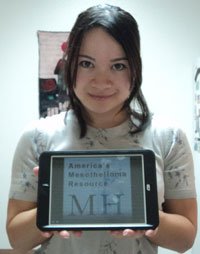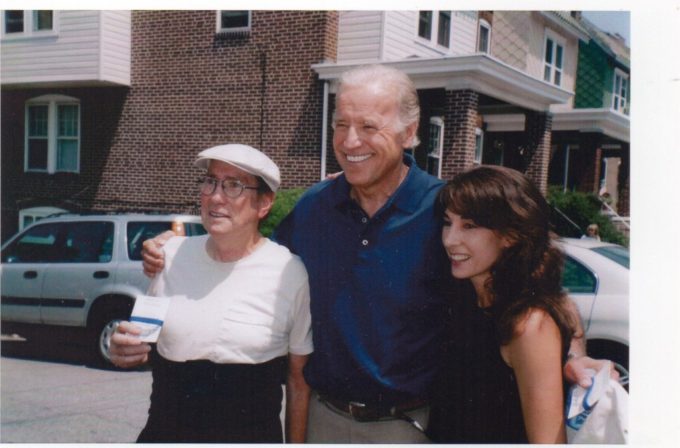Category: Scholarship

Miracle Material – A Deadly Diagnosis
By: Kennedy McAlpin
One of the most tragic, yet mystifying, occurrences on our planet is the disease of cancer. It comes in many shapes and forms and in most instances is unpreventable. However, for one particular type of cancer, prevention is very easy, making it one of the most frustrating. Mesothelioma happens to be the type of cancer that can be prevented by avoiding exposure to asbestos. Unfortunately, asbestos has been flooding into our country for the last two centuries and continues to do so. It has made its way into our homes, businesses, pipelines, and more. When we first began using it, asbestos seemed like the miracle material- strong and inflammable. However, we have discovered since then that this miracle material is actually a silent killer. The hope for ridding our country of this disease can only come from awareness and education, informing everyone that asbestos is extremely harmful and potentially deadly for those who are exposed.
For those families who are dealing or have dealt with mesothelioma, finding closure and comfort is extremely important during times of loss. As a future Speech-Language Pathologist, my hope is to work with individuals dealing with cancer of all kinds in order to improve their quality of life through effective speech. As anyone who has dealt with cancer knows, the quality of life during the last days of someone’s fight is of the upmost importance to that individual and their family. For me to be able to help would be the most rewarding experience. However, completely ridding our country of this toxic material should be our top priority.
Raising awareness of the Dangers of Asbestos is the number one way we can prevent mesothelioma and increase early cancer detection. The use of websites and scholarships such as these greatly expand our population’s knowledge on the topic of asbestos and mesothelioma. People who have been exposed to asbestos need to realize that they are in great danger. Through portals that can vastly spread information, such as social media sites and news sources, individuals will be able to gain information that is vital for early detection and treatment. How can someone take action towards health problems if they do not realize they are in danger? If continued publications spread word of this deadly disease, one day, mesothelioma will be a killer of the past.
However, it is going to take the hard work of very dedicated individuals to bring this awareness to a rise. Our government officials need to be forced to take a hard look at the legislation of this country. As of now, asbestos continues to be imported into our country every day at an alarming rate. In fact, imports of asbestos increased by 25% in 2011 from the previous year. Americans are being lead astray, believing that our country is becoming safer from the dangers of asbestos. This is just not true. What makes this even more frustrating is that over 50 countries have already banned the importation and use of asbestos. America is simply disregarding the obvious fact that there are alternative materials to asbestos that are affordable and safe. It is my duty and the duty of other informed individuals to raise our voices against asbestos.
When originally deciding to become a Speech-Language Pathologist (SLP), I was unaware of how vast the field exactly was. I assumed that most speech-language pathologists took on the role of working in elementary schools helping kids with their articulation. However, after being in the program for only a few short weeks, I have come to realize that our realm of work is extremely broad. I have specifically seen the impact of speech-language pathologists in my anatomy class. Realizing the broad range of people I have the opportunity to work with has opened my eyes and greatly increased my passion for the field of speech-language pathology. When working with geriatrics, SLP’s have the opportunity to help people who have endured strokes and other health conditions.
However, this can also extend to those who are dealing with cancers such as mesothelioma. One of the symptoms of mesothelioma is shortness of breath. When individuals experience shortness of breath this directly affects their ability to speak. Speech is powered by the lungs and when the lungs do not have enough power to provide the adequate amount of air supply for speaking, speech can become disfluent, choppy, and often times at a level that is too low to hear. Very quickly, communicating can become very frustrating for an individual with shortness of breath, chest pains, or chronic coughing. Fortunately, SLP’s are highly trained in giving therapy that can greatly improve an individual’s speech when experiencing these symptoms. The ability to effectively communicate is a daily life skill that we often take for granted. For someone who is potentially facing their last days with their family and loved ones, communication is something that should not be sacrificed. As an SLP, my hopes are to have the privilege to equip mesothelioma patients with the ability to speak both effectively and comfortably.
I am able to empathize with family members of mesothelioma patients as I have dealt with my own grandpa suffering from lung cancer. Thanks to his ability to speak during his last days on Earth, he was able to share with me stories from his time serving our country in the Navy. These are memories that I will always cherish. For those families who have lost loved ones to mesothelioma, there are no words that can express my deepest apologies. I cannot pretend to understand the frustration that comes from knowing that the disease that took your family member was one that could have been prevented. However, the best thing to do in order to honor your family member would be to channel this frustration into a passion for spreading the word about asbestos. In order to prevent asbestos from taking thousands of more lives each year, action must be taken right now. Our families are continuing to be exposed to this toxic material because of lack of awareness and industries refusing to use alternatives for asbestos.
Although cancer is very mystifying, mesothelioma is not. The cause is known and prevention has been found. This is one cancer that should be eradicated from our country. However, word must spread. In order for word to spread, we must raise our voices to our government officials. Legislation must be passed that completely bans asbestos from entering through our boarders. The fact that over 50 countries worldwide have already stopped importing asbestos and America continues to do so is appalling. But I refuse to stay silent. Through my awareness, others will become aware. Through my education, people suffering from this disease will be able to have a better quality of life during their last moments with family. Through the inspiration of families who have lost loved ones to mesothelioma, others will be revived. Not a single person more should lose their life to asbestos because now, we know.
References
Mayo Clinic. “Symptoms (of Mesothelioma).” 24 Oct. 2012. Web. 02 Oct. 2015.
MesotheliomaHelp.org. “Causes of Mesothelioma.” 11 Feb. 2013. Web. 02 Oct. 2015
Povtak, Tim. “Asbestos Imports Have Started to Rise Again, Fueled by Manufacturers’ Demands.” The Mesothelioma Center. 26 Jan. 2012. Web. 02 Oct. 2015.
Seikel, J. Anthony., King, Douglas., & Drumright, David. Anatomy & Physiology for Speech Language, and Hearing {Fourth Edition}. Clifton Park, NY: Delmar, Cengage Learning; 2010.
The Mesothelioma Center. “Asbestos Exposure.” Web. 02 Oct. 2015.
About
 Kennedy McAlpin
Kennedy McAlpin
I am currently a junior in the Communication Sciences and Disorders program at Western Kentucky University. I plan to complete my Master’s Degree in Speech Pathology. I hope that I will be able to improve the lives of people with cancer and improving their ability to breathe, swallow, and speak. I have a passion for people that goes well beyond helping them; I want to be the bright spot in their week.

John Dreier Essay
By: John Dreier
“What are all the symptoms you have had due to LAM?” Over six hundred people have answered me, and their shortness of breath, their collapsed lungs, their cysts, their tumors, all of it- fit neatly into a column of a spreadsheet. I have graphed their pain and analyzed their suffering. However, no Cartesian coordinate system that can convey what it is like to listen to the belabored pauses between the answers as these women struggle to supply their bodies with sufficient oxygen. Yet the patients I talk to never sound dispirited. Their ragged breaths never hint at a despair one might assume would be omnipresent. To face cancer is to acknowledge the death within life- your body’s own tissue transforming into a terrible sickness. Lymphangioleiomyomatosis, or LAM, the lung disease my lab studies, occurs primarily through genetic events. You cannot prevent your genes any more than you can prevent the weather.
Mesothelioma, however, is a much more terrible, destructive lung disease (though it can affect other organs) and does not typically arise from genetic events. Asbestos, a seemingly innocuous fibrous silicate, which is the primary cause and risk factor for mesothelioma. While prevention and awareness are essential to keep people from becoming afflicted by mesothelioma, the reality is that each year 3,000 Americans are diagnosed with this frighteningly aggressive cancer. Each year 3,000 mothers, fathers, daughters and sons are forced to acknowledge the death within their lives. If we are to address mesothelioma head-on, we must not only focus on prevention and awareness, but also on treatment and, ultimately, a cure. We must endeavor to do more than merely attempt to ameliorate this disease. We must eradicate mesothelioma from the lungs of loved ones so they can take a deep, full breath of life, and acknowledge that death but visited, and his stay was just a reminder of our own mortality.
My grandmother, a spry 95 year-old, remembers when asbestos was casually mixed in with all manner of building materials. Similarly, my mother can recall playing hop-scotch on spare asbestos-laced roof shingles. While the matrons of my family are thankfully mesothelioma-free, their stories are not uncommon for many people their age. Furthermore, the buildings constructed during that time still exist – many of which may secretly harbor asbestos in their walls and ceilings. While asbestos is only harmful in an aerosolized form, asbestos materials are a lurking danger. What can we do about this danger, given its omnipresence? Counterintuitively, the safest thing is to do nothing. Keeping asbestos-laden materials in good upkeep prevents the fibers from making their way into lungs and airways. If we demolished every building with asbestos, not only would the cost be exorbitant, but it would also increase the risk of releasing the deadly fibers into the air. On the other hand, if older buildings are allowed to fall into disrepair, their deterioration too could aerosolize asbestos. Thus, many states have enacted standard policies of asbestos testing for many large building demolitions and remodeling contracts. However, anyone and everyone who has a home-improvement project in mind, or is involved in the upkeep or custodial duties of older buildings, should be aware of the dangers of asbestos. Tearing down that wall between your kitchen and your living room may give your home a modern, open-style look, but it may also release a deadly agent into the air. Spreading this knowledge is the first step in creating a mesothelioma-free world.
While prevention and awareness are a necessary step in eradicating mesothelioma, research into treatment and a cure is absolutely critical for those already afflicted with this deadly disease. Scientists are actively trying to discover new ways of combating mesothelioma. There are currently 96 open clinical trials related to mesothelioma, 57 of which are in the United States and 43 pursuing interventional strategies. Unfortunately, the road between the discovery of a drug that has cancer-inhibiting potential to FDA approval is a long one. Take everolimus, for instance, the primary drug used to treat tuberous sclerosis complex (TSC), another disorder my lab studies. In 2009 Memorial Sloan Kettering Cancer Institute began exploring the potential of everolimus to treat a certain subset of patients with malignant pleural mesothelioma (MPM). This Phase II trial (remember, a drug must pass Phase III to make it onto the market) lasted 6 years. Iin April 2015, the study concluded “Everolimus has limited clinical activity in advanced MPM patients. Additional studies of single-agent everolimus in advanced MPM are not warranted.” To put that time-frame into context, I began college in 2009 and graduated in 2013. It takes longer for a drug to be deemed ineffective than it does to get a bachelor’s degree. Consider also that less than 10 percent of patients diagnosed with mesothelioma will live past five years. With a cancer as aggressive as mesothelioma, national interest, financial support, and intense, fast-paced research are necessary for the very survival of these patients.
Having worked in a translational medicine laboratory for the last two and half years, I am more than familiar with the obstacles confronting the scientific community attempting to treat these debilitating cancers. It is not an easy process. Each step must be scrutinized carefully, because any flaw may only waste time of researchers and patients alike. Even so, I would tell a family member of someone afflicted with mesothelioma that there is hope. Personalized (sometimes referred to as targeted) medicine is the future of healthcare, and cancers will be the most susceptible to this approach. With lowered costs of genetic sequencing as well as faster and more robust algorithms combining proteomic, metabolomic, and genetic profiling – we are rapidly pushing the boundaries of not only detection of biological targets, but also therapies specifically designed for those targets. My hope as a scientist, and as a future clinician, is that increased awareness of mesothelioma will garner public attention and support for directed therapies. For now, all we can do is spread the word, and provide the resources to dedicated scientists and physicians fighting to end this deadly disease.
We cannot change the past. Asbestos is all around us – in our homes, our schools, our offices – it surrounds us. However, we can build a new future. A future in which families are aware of the dangers of older buildings and take precautions; a future in which support and funding for mesothelioma enter the national spotlight; a future in which a patient diagnosed with mesothelioma has hope for a cure, because personalized medicine has a solution specifically for them. We can build that future, but it has to start today.
References
- Alexander HR, Burke AP. Diagnosis and management of patients with malignant peritoneal mesothelioma. Journal of Gastrointestinal Oncology. 2016;7(1):79-86. doi:10.3978/j.issn.2078-6891.2015.134.
- Calabrò, Luana, Aldo Morra, Ester Fonsatti, Ornella Cutaia, Carolina Fazio, Diego Annesi, Marica Lenoci, Giovanni Amato, Riccardo Danielli, Maresa Altomonte, Diana Giannarelli, Anna Maria Di Giacomo, and Michele Maio. “Efficacy and Safety of an Intensified Schedule of Tremelimumab for Chemotherapy-resistant Malignant Mesothelioma: An Open-label, Single-arm, Phase 2 Study.” The Lancet Respiratory Medicine 3, no. 4 (2015): 301-09.
- ClinicalTrials.gov, U.S. National Institutes of Health, Web. March 20, 2016
- Mass.gov, Massachusetts Energy and Environmental Affairs, “Answers to Common Asbestos Questions,” Web. March 15, 2016
About
 John Dreier
John Dreier
John Dreier is transitioning from being a scientist at a genetics research lab to a physician assitant student at Boston University. He hopes to use his training and passion in the basic sciences to help his patients become familiar with the biological ins-and-outs of their ailments. While cancer and mesothelioma are obviously terrible afflictions, battling these hardships drive people together in a way that is hard to explain. Tapping into that emotion appealed to some basic human part of me.

Essay Contest: Win an Apple iPad Mini
Contestants in the MesotheliomaHelp Scholarship Essay Contest sponsored by Belluck & Fox, LLP, have an additional chance to win a iPad-mini.
Share the essay contest with friends and family on Twitter and Facebook for a chance to win an Apple iPad Mini. The more you tweet the more opportunities you have. Please remember that to be eligible to win you should submit your essay in the annual essay scholarship contest. One lucky ipad-mini winner will be selected at random!
Every year, as an incentive to get people participating in our scholarship contest, we provide a chance for students to win an iPad Mini by sharing their essays with friends, family and all readers of MesotheliomaHelp.
 Maryam Khazraee:
Maryam Khazraee:
Maryam Khazraee is a Third Year Doctorate of Pharmacy student at the University of Florida. If she could only choose three words to describe herself they would be Leader, Activator, and Achiever. She has consistently shown determination and perseverance for knowledge, compassion in helping others, and justice in creating fairness among all. Her interests include managed care pharmacy, oncology, and specialty drug development. She could like to pursue further education by completing an oncology residency or pharmaceutical industry fellowship while utilizing her skills and experiences in making a positive global impact.
 Kim Forgione:
Kim Forgione:
Kim Forgione graduated from the University of Montana with a degree in wildlife biology. She is now looking forward to starting a doctorate of optometry program next fall at Pacific University College of Optometry.

The History of Asbestos Use in America
One day my grandfather felt really sick and so my grandmother went with him to the emergency room. My family had no idea what was wrong, but we didn’t think it was anything serious. He stayed in the hospital for a few days and soon after, he had numerous blood tests and a lung biopsy procedure which eventually showed that he had been living with mesothelioma. He got much sicker all of a sudden and we knew that he wouldn’t be with us much longer because of his late stage mesothelioma diagnosis. This hit our family very hard. My grandfather was a construction worker in New York City for many years until he retired. He bravely worked on some of the tallest skyscrapers.
He would always tell stories about his life on the job; walking across tiny beams hundreds of feet in the air with no harnesses, eating lunch on the beams with an amazing view of the city, or playing pranks on his workmates. He loved his job. Unfortunately, through working on these buildings, he was unknowingly exposed to asbestos. His job, which he took so much pride in, is what caused his premature death. He passed away one year ago in February, just thirty days after his mesothelioma diagnosis. I wasn’t ready to say goodbye to him. It is not fair that the companies producing the asbestos products that my grandfather was exposed to knew of their potential dangers, yet he was kept in the dark.
Asbestos was discovered by the Ancient Greeks more than two thousand years ago. The Greeks noted its harmful biological effects. They noted the “sickness of the lungs” in the slaves that worked with asbestos, but its seemingly magical properties overruled the obvious symptoms. The use of asbestos declines during the Middle Ages, but reappeared in the 1700s and became popular along with the Industrial Revolution during the late 1800s. This is when it began being used as insulation for steam pipes, turbines, boilers, kilns, ovens, and other high-temperature products.
Asbestos insulation was the biggest source of asbestos exposure for workers throughout the 1900s. Heat insulation containing asbestos was used for the first time in 1866. In 1870 asbestos was mixed with cement for boiler covering. By 1874, asbestos insulation products reached commercial production and were sold on a mass scale. Bans on asbestos-containing insulation didn’t appear until the 1970s. One of the primary manufacturers of asbestos insulation products was Johns Manville.
In the 1930s major medical journals began to publish articles which linked asbestos to cancer. People may be exposed to asbestos in their workplaces, communities, or even homes. Asbestos products release tiny asbestos fibers into the air. When these fibers are breathed in, they may get trapped in the lungs. The fibers accumulate in the lungs over time and eventually lead to mesothelioma. Many of the people currently fighting mesothelioma in America were unwittingly exposed to asbestos in their younger years and were shocked to find out that they had been exposed to such a harmful substance for such a long period of time.
After it was publically established that asbestos was linked to cancer, most asbestos products were banned in the United States. The United States Environmental Protection Agency (EPA) finally began banning some asbestos related products in the 1970s. In 1990, the EPA overturned the bans and instead prohibited spray-on application of materials containing more than 1% asbestos to buildings, structures, pipes, and conduits. Asbestos is still legally allowed in certain small concentrations but these concentrations can still be harmful with on-going exposure. Asbestos exposure is still an issue in America today.
Asbestos is present in new products and materials and an estimated thirty million schools, homes, and workplaces are still contaminated with asbestos. Most asbestos used in the United States today is imported. Asbestos is still used commercially in brake pads, automobile clutches, roofing materials, vinyl tile, and imported cement pipe and corrugated sheeting. This is significantly fewer products than had previously contained asbestos, but I still feel that these uses are unnecessary. Steps need to be taken in order to not only stop the production of products containing asbestos, but to remove the existing asbestos from old buildings and products.
My grandfather worked on the first skyscrapers that utilized spray-on asbestos insulation in New York City. Construction workers were surrounded by asbestos every day, yet they were all unaware of the harmful effects that would hit them later in life. Proper precautions were not taken many years ago and the results to that generation of workers are horrific. Sadly, there is no happy ending to the History of Asbestos Use in America.

My Hero
by Samantha Robeson
A yellow Post-It note is stuck over his mouth with a drawing of a huge smile on it; a furry stuffed hedgehog sits precariously on top of his head. Memories of my Poppop always bring a smile to my face. The side effects from the medication of the latest clinical trial didn’t make Poppop’s hair fall out, but it made it curly and wiry. He called himself Brillo Head and would make his grandkids giggle by using our stuffed animals as his wigs. Poppop always had a smile on his face; if the pain was too bad or if he was too weak to smile, he would draw one on his face so that we knew he was still happy inside. He wasn’t just a survivor; he was so much more to all of those who had the pleasure of being in his presence. Nobody knows how he could stay so positive for so long in the face of such pain and suffering. When he was hurting so badly that he couldn’t hide the anguish, he would hide from his loved ones so as not to upset them. It sounds cliché to say that my Poppop was such an inspiration, but it is hard to put into words how his charisma and optimism touched those around him. He was my hero.
 For 38 years, Carl Roca “Poppop” was a pipefitter; like millions of other tradespeople, service men and shipyard workers, he was being exposed to asbestos on a daily basis. It wasn’t until 1986 that he got a letter from his union talking about the dangers of asbestos, and recommending that he get a screening. It showed a little scarring on his lungs but nothing to be concerned about; the follow-up appointment with the pulmonologist confirmed that his condition was stable. In 2001 Poppop started to have chest pains and shortness of breath. He went back to the pulmonologist, who still didn’t suspect mesothelioma; he performed surgery to drain the fluid and he took the liberty to scrape the scar tissue. After the surgery, he told the family that he knows what cancer looks like, he was sure Poppop didn’t have cancer and that he should be fine. Sadly, while being discharged from the hospital, Poppop saw the word “mesothelioma” scrawled on a piece of paper. It was up to the family to learn about this dreadful disease.
For 38 years, Carl Roca “Poppop” was a pipefitter; like millions of other tradespeople, service men and shipyard workers, he was being exposed to asbestos on a daily basis. It wasn’t until 1986 that he got a letter from his union talking about the dangers of asbestos, and recommending that he get a screening. It showed a little scarring on his lungs but nothing to be concerned about; the follow-up appointment with the pulmonologist confirmed that his condition was stable. In 2001 Poppop started to have chest pains and shortness of breath. He went back to the pulmonologist, who still didn’t suspect mesothelioma; he performed surgery to drain the fluid and he took the liberty to scrape the scar tissue. After the surgery, he told the family that he knows what cancer looks like, he was sure Poppop didn’t have cancer and that he should be fine. Sadly, while being discharged from the hospital, Poppop saw the word “mesothelioma” scrawled on a piece of paper. It was up to the family to learn about this dreadful disease.
The oncologist explained that the procedure done by the pulmonologist (partial decortication) severely limited Poppop’s later treatment options such as a pleurectomy or pneumonectomy. Also, one of Poppop’s ribs was broken during the surgery; the severe pain was from the nerve bundle that was then trapped. Surgery to fix the rib was not recommended due to the spreading cancer. The oncologist told Poppop that he had 6 months to live, and since chemotherapy would not cure the cancer he wouldn’t recommend any treatments. He suggested that Poppop get his affairs in order. If this were me, I would be ticked off at the asbestos companies and the pulmonologist who told me I didn’t have cancer. Not Poppop—he never worried about himself, because he was too busy caring about Mommom, his four kids and us 10 grandchildren. He wasn’t going to let this death sentence kill his spirit.
Poppop was only 60 years old; how could he have only 6 months left to live? We spent every weekend with him in the summer, when the family would crowd into his little trailor at the beach to enjoy each other’s company. He was just chasing me around with a live crab saying it was going to bite my nose. Poppop was the one who took care of everything for everybody; he fixed everyone’s toilets, heaters, cars, boats and he even knew how to fix broken hearts with a smile. Poppop would make sure everyone else’s problems were fixed before he tended to his own leaky faucet. What would we do without our Poppop? Everything would fall apart and no one would laugh ever again!
Have no fear, Poppop is here to put a smile back on everyone’s face. He wasn’t going to let a little cancer destroy his family. He would joke with all of saying “Meeezofeeeleeeheeemeeesheemeeomia– how could something with such a goofy name be so scary?” Comic relief was our saving grace when Poppop was around. My mom tried not to let us kids see her cry, but I remember how she didn’t go to sleep for days because she was doing research to find some ray of hope. Finally, she found a story about a man with mesothelioma who was involved in a clinical trial and was beating the odds. Within days, Poppop was on the phone with this survivor, and my mother had used a ream of paper printing out information about the clinical trials for people with mesothelioma.
Poppop’s 6 month death sentence turned into a 6 year stay. He looked at each day as a gift, and he taught us to be grateful rather than resentful. While participating in the various clinical trials, Poppop spoke to newly diagnosed patients who had no idea what they should do next. Naturally, he found a way to make even the sickest people smile. Mommom would tell us stories about Poppop’s antics when he was getting his treatments with the other cancer patients; his silly jokes would make not only the other patients but also the medical staff crack up. In addition to being a great support to other cancer patients and their families, he also educated others by talking to various community, medical and labor groups. In 2005, the Graham Cancer Center (Delaware) awarded my Poppop with the “Community Excellence Service Award” for reaching out to help others.
My Poppop also helped to raise awareness about Mesothelioma at the federal level, but that was no easy task. He never gave up; he wrote letters until the officials agreed to meet with him, he took multiple trips to Washington D.C., and he would track down our state officials at every carnival and parade they attended. Senator Joseph Biden (who is now our Vice President), replied to every letter, met with my father and wore the blue Mesothelioma Awareness bracelet my father and mother gave him. When I look at the picture of my Poppop talking with Representative Michael Castle about mesothelioma, it is hard for me to believe that less than 4 months later he took his last breath. My Poppop had to wear a tight band wrapped around him and suck on pain lozenges, but this didn’t stop him from spreading awareness. (see the attached photos)
A month after my Poppop was laid to rest, my Mommom was mailing information to the government officials with a cover letter stating, “My husband died from mesothelioma…He was in the process of writing the attached letter when his cancer became very aggressive, so he was never able to mail it. Since he was diagnosed with mesothelioma six years ago, his main concern has been to inform the public…Before he died I promised him that the letter would be mailed. Please take a few minutes to read it.” Years after his passing, we continue to spread awareness in his memory; along with my mother, brother and Mommom, I went to Washington D.C. and was able to share our family story with those on Capitol Hill. I wish my Poppop could have been at my high school graduation and could see how hard I am working in college, but instead of being sad, I feel joy that he was an important part of my life. Hopefully one day, I’ll become a Bio-Medical Engineer who helps to develop treatment options that enable those with cancer to write their own personal survival story.
About
 Samantha Robeson is a Sophomore studying engineering at the University of Delaware. My goal is to get into the Bio-Medical Engineering Program so that I can help in the search for a cure and the development of better treatment for those with cancer. My grandfather’s brave fight against mesothelioma has inspired me to enter the field of cancer research, and I hope to make a difference.
Samantha Robeson is a Sophomore studying engineering at the University of Delaware. My goal is to get into the Bio-Medical Engineering Program so that I can help in the search for a cure and the development of better treatment for those with cancer. My grandfather’s brave fight against mesothelioma has inspired me to enter the field of cancer research, and I hope to make a difference.

Free Mesothelioma Patient & Treatment Guide
We’d like to offer you our in-depth guide, “A Patient’s Guide to Mesothelioma,” absolutely free of charge.
It contains a wealth of information and resources to help you better understand the condition, choose (and afford) appropriate treatment, and exercise your legal right to compensation.
Download Now